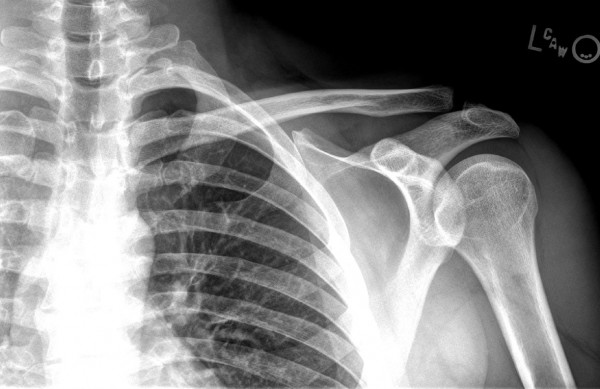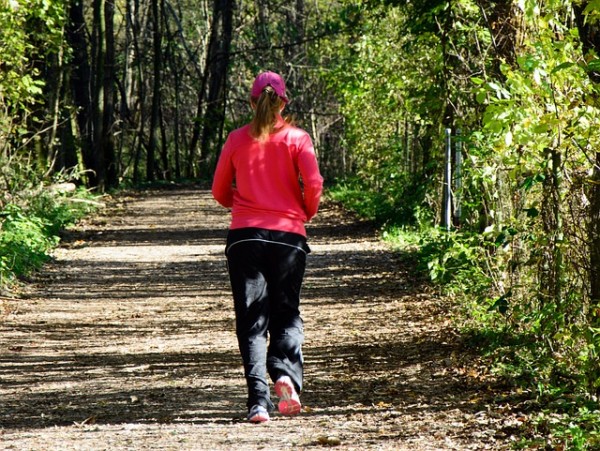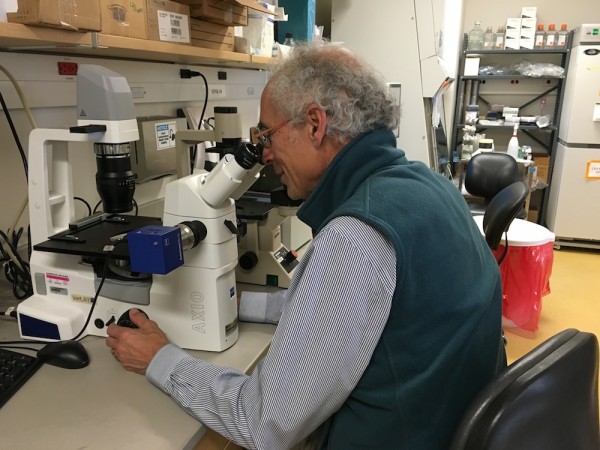
Photo credit: alon salant via VisualHunt / CC BY-NC-ND
Did you know that every ten years our entire skeleton changes? It’s called remodeling. Bone breaks down or dissolves and new bone forms in its place.
As you get older, keeping the bones strong and healthy requires a balance that is difficult to achieve. “In order to keep that balance you’ve got to form new bone,” says Dr. Clifford Rosen, Senior Scientist and Director, Center for Clinical & Translational Research at the Maine Medical Center Research Institute. “With aging, that new bone formation can’t keep up. It just doesn’t keep up with the dissolving of bone.”
Dr. Rosen and other scientists have been trying to figure out why new bone cells don’t form as well as we age. The old cells don’t simply die or disappear. Instead, the research shows that they turn into fat cells. That’s right. Fat cells — that are stored in the bone marrow. Why does that happen? “Well, for one reason,” says Dr. Rosen, “it’s easier because all they have to do is sit there and accumulate fatty acids and store their fat whereas a bone cell has to lay down bone. It’s a very active energy-dependent process.”
Most people’s bones are as dense as they’ll ever be between the ages of 18 and 25. By the time you reach 35, density begins to gradually decrease. Bone loss happens in men and women, but loss of estrogen after menopause gives aging woman a double whammy.
Without estrogen, a woman can lose as much as 20 percent of her bone mass in five to seven years. “Estrogen’s a big deal,” says Dr. Rosen. “You need a critical amount of estrogen. It’s the most powerful signal to prevent forming bones cells from becoming fat cells.”
Losing bone can lead to osteoporosis or brittle bones. Osteoporosis causes about 1.5 million fractures every year in the United States. Not all post-menopausal women develop osteoporosis or its precursor osteopenia and not all will have fractures.
Determining risk
To determine a woman’s risk, most guidelines recommend getting a DEXA screening at or around age 65. A DEXA scan uses low-dose radiation to measure the amount of bone mass in the hip and spine. It compares the results to those of a healthy younger woman. The comparison, known as a T- score, gives a good idea of how much bone mass you may have lost over the years.
T-scores
.9 or above (0, .5, .9) = normal
.9 to -2.4 = osteopenia
-2.5 or lower = osteoporosis
“It won’t tell you the quality of your bone,” says Dr. Rosen, “just the mass of your bone. Your mass is then measured against a 35-year-old and it gives you some estimate of how far below a young healthy female you would be. The lower you are the more at risk you are for fractures. It’s not perfect but it’s a good screening tool.”
DEXA scans are recommended for
- Women over age 65.
- Men over age 70.
- Anyone with a broken bone who is over age 50.
- Postmenopausal women with risk factors such as height loss, medication use, certain diseases and family history.
Knowing your FRAX ® score may also help determine your risk. It was developed by the World Health Organization (WHO) and uses the T-score from your DEXA scan, along with your weight and family and personal fracture history to calculate your risk of having a fracture over the next 10 years. I found the FRAX ® tool online, which you can try yourself, but you’ll need your T-score.
Treating osteoporosis
At what point do you treat someone in order to prevent a fracture? Not too long ago, many women with osteopenia were automatically treated with osteoporosis medications. The goal was to prevent future fractures.
That approach is no longer recommended says Dr. Rosen. “We tended to overtreat a decade ago,” he says. “Overtreatment is treating somebody who is at relatively low risk. Somebody who just has osteopenia isn’t necessarily at high risk. It’s really when you get outside of two 2.5 standard deviations. Those are the people who are at highest risk.”
But here’s where striking a balance becomes important again. In the past few years, the treatment pendulum appears to have swung in the opposite direction. Instead of overtreating osteopenia, the number of women taking osteoporosis drugs has gone way down. “To the point that it’s hard to convince people to take the drug,” says Dr. Rosen. “Part of the problem is we overtreated people who didn’t need it and then we saw some rare side effects (spontaneous leg fractures). Now we’re trying to convince people that those who are at highest risk — somebody who is 70 years old, has had a previous fracture, those people should be on the drugs because they do work.”

Antranias / Pixabay
Keeping bones healthy
What does Dr. Rosen recommend for women who are not high risk but still need to keep their bones healthy? It’s a simple formula.
- No smoking
- Very moderate alcohol intake
- Regular exercise, especially weight-bearing exercises
- Healthy weight — don’t get obese
- Healthy food to keep your microbiome* intact
*Your microbiome is the collection of microscopic organisms, such as bacteria and fungi, that live on and in your body. Million and millions. They’re on our skin, in our mouths, on our teeth, and in our stomachs and the rest of the digestive system.
Most research has focused on how some microorganisms cause disease. We’re now learning more and more about the critical role they play in keeping us healthy, right down to our bones. “We’ve been doing some studies on it recently,” says Dr. Rosen. “You want to make sure that the bacteria in your gut are symbiotic with your body. Probiotics are very, very helpful. And there’s some data that probiotics may also prevent some of the estrogen-related bone loss that occurs after menopause.”
In general, post-menopausal women who are thin and small-framed are at higher risk of developing osteoporosis. I’d heard that putting on a few extra pounds might offer some protection against osteoporosis because fat cells produce estrogen. Here’s what Dr. Rosen has to say about that: “The old saw that if you just gain weight you won’t have osteoporosis is not true. The more obese you are, the more inflammation is produced from fat cells. Your heart and your cardiovascular system will be targeted. And your skeleton will be targeted as well. You want to stay away from inflammation of any kind.”
What about supplements?
Should you take calcium supplements? Vitamin D?
Yes, on the calcium, but maybe not as much as you think. Dr. Rosen believes it should be easy for most women to get 1000 milligrams from their diet. Calcium-rich foods include dairy products and fortified foods and drinks.
- Women under age 50 and men under age 70 need 1000 mg a day.
- Women over age 50 and men over age 70 need 1200 mg a day.
As for vitamin D, if you live in New England instead of the south, it’s true that you won’t get as much from sunlight. “But,” says Dr. Rosen, “we don’t think it has any implications for either the skeleton or for any chronic diseases. We think that you need to have really low vitamin D before you get into any issues with your bones.”
Really low (which can be determined with a blood test) is well below 20 nanograms/ml. If it’s that low, it’s important to know why. “Your doctor should investigate why so low. People who are African American can be low because of skin pigmentation. With others, it’s important to know if there’s another reason. The other interesting thing is that obesity contributes to low vitamin D. So, again, staying away from obesity is really important.”
In addition to sunlight, you can get some vitamin D in wild-caught mackerel, salmon and tuna and some fortified milk and orange juice.
- People under age 50 need 400 to 800 IU a day.
- People over age 50 need 800 to 1000 IU a day.
So … this is a lot of information to take in. Important information. If there is something you’d like explained better or have a general question about osteoporosis and the latest research, use the comment box below or send me an email and I’ll try to get you an answer.
Time to exercise
If you’re inspired to get some exercise, remember that it needs to be weight bearing. You want to use your own body weight to work against gravity. A brisk walk is weight-bearing; a brisk swim is not. I’ve got some examples for you:
- Brisk walking
- Hiking
- Running
- Dancing
- Kickboxing
- Housework
- Yoga
- Tai chi
- Pilates
- Golf
- Racquet sports
See you later. I have a date with my treadmill.


Another great post, Diane. You’ve made it all so understandable and relatable. Now to get off my arse and onto the treadmill more regularly!
Thanks Roxanne. On mine right now. Arse, not treadmill!
I exercise regularly, I just hope my bones get stronger as a grow older. Thanks for sharing these insights. I learned a lot.
Helen, Thank you! Every time I write something I learn something new, too!